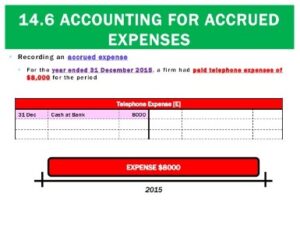Content

You can see your unpaid bills in real time and pay them seamlessly from your ‘Bills’ page on Wise. Having a system in place to manage payments should reduce errors and lead to faster invoice settlement. Cash flow records the amount of money that is moving in and out of a business. This department also works to reduce costs by developing strategies to save the business money. In simple words, revenue refers to the money coming in, and expenses refer to the money going out. Follow a consistent, replicable process each time you assign an invoice number in your system.

For example, if management wants to increase cash reserves for a certain period, they can extend the time the business takes to pay all outstanding accounts in AP. Digitally enabling the AP process would advance business strategies by turning vendor-client relationships into a competitive advantage. Accounts payable helps ensure that your business doesn’t fall behind on any payments that are due. It also makes your liabilities (e.g., debts) more transparent, and therefore easier to accurately project your cash flow.
How are contractors paid: 3 Methods and 13 Sites to Use
AP often handles a supply of sales tax exemption certificates issued to managers to ensure qualifying business purchases don’t include sales tax expenses. Depending on the responsibilities accounts payable receives from a company, they might process requests and distribute funds to cover travel expenses. After business travel, AP would then be responsible for settling funds distributed versus funds spent and processing travel reimbursement requests. In accounts payable, a simple mistake can cause a large overpayment.
- It refers to the money that is expected from customers but has not yet been paid.
- In some companies, one specific accountant may be responsible for all accounts payable.
- Ultimately, the roles and responsibilities of AP depend on the size of an organization.
- This will ensure your balance sheet is kept up-to-date and accurately reports on the total amount owed to your vendors, enabling transparency in your book keeping efforts and accounting process.
- In some cases, a transaction may have had prior authorization by company management.
AR is the money a company expects to receive from customers and AP is the money a company owes to its vendors. For example, when your business purchases goods from a vendor on credit, you will record the entry to accounts payable and the vendor will record the transaction to accounts receivable. Proper double-entry bookkeeping requires that there must always be an offsetting debit Accounts Payable Ap Definition and credit for all entries made into the general ledger. To record accounts payable, the accountantcredits accounts payable when the bill or invoice is received. The debit offset for this entry generally goes to an expense account for the good or service that was purchased on credit. The debit could also be to an asset account if the item purchased was a capitalizable asset.
Standardized Processes
Auditors use different methods to evaluate the efficacy of accounts payable and accounts receivable safeguards. When auditors test AP, they typically look for instances of quantity errors or, in some cases, unethical behavior on the part of the vendor. For example, the supplier might have mistakenly, or purposely, billed for https://kelleysbookkeeping.com/ more products than it delivered. When analyzing this option to pay later, it is important to consider the company’s ongoing relationships with its suppliers. Another less common usage of the term “AP” refers to the business division or department in charge of making payments due by the firm to suppliers and other creditors.
